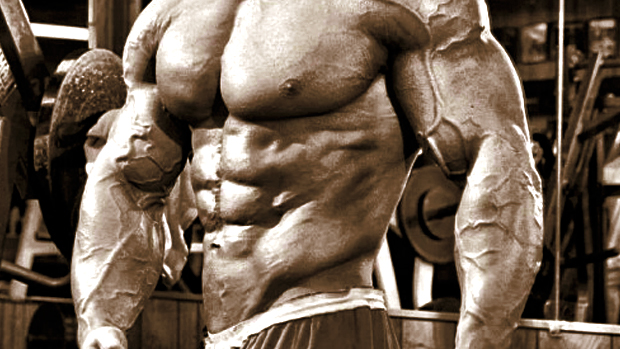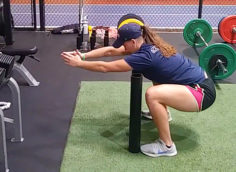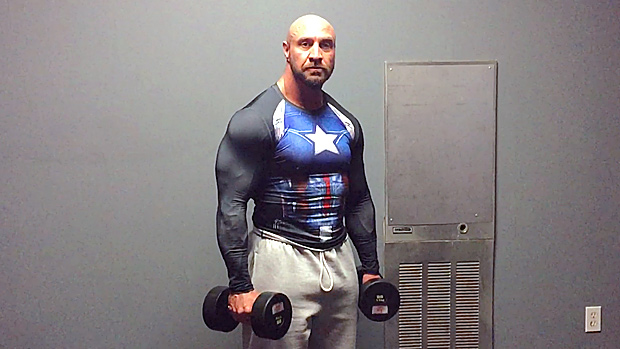Who Do We Believe?
- The strength guys say something like, "Forget doing abs, just do heavy squats and deadlifts."
- Don't even say the word "core" around these guys.
- The functional guys say, "Lying down is not functional."
The functional guys seem to be against any core training not done standing. If we proceeded logically we would see that both groups – the strength guys and the functional guys – at least agree that all good core training is done standing.
As usual, I disagree with both parties.
In my continued pursuit of unpopularity I'm going to disagree with both the functional guys and the strength crowd. I know the Testosterone reader is saying, "But you're a functional guy." Not true. Actually, I'm a results guy. I'm a best practices guy.
Yes, my first book was called Functional Training for Sports, but I think some of the proponents of functional training have gone too far and I'm not the only one who thinks that way. I got an email recently from Matt Nichol, strength and conditioning coach for the Toronto Maple Leafs. Matt said, "I feel like I have to apologize these days for actually trying to get my guys strong."
The truth is everybody has his or her own definition of functional training. Mine is the application of functional anatomy to training. This means I'm going to take what I know about anatomy and apply it to what I know about training.
The important thing is I'm not going to forget or dispose of what I know about training. I still think that one-leg exercises are more functional then two leg exercises because we move on one leg at a time in real life. I still think dumbbells are more functional than a bar because of the unilateral nature of dumbbells. We are unilateral machines.
Face it.
With that said, I still believe in lifting weights. I want my athletes to be strong, and to be strong you have to lift heavy stuff. Reaching with, and or waving a five-pound dumbbell in three planes of motion isn't training. It might be warm-up, but it's not training in my book.
However, this article isn't about the function debate but rather about training the anterior core, otherwise known as the abs. I think there's a compromise between the functional guys and the strength guys. The key to getting the strength crowd to listen might be getting them to read the following, which came from one of their own:
"I love those damn five-dollar ab wheels. I loved them when they came out in the sixties, I loved them when they returned with the advent of the Internet, and I love them as my favorite "anterior chain" exercise." – Dan John
Guess what? I agree with Dan.
However, we have a small problem, we need progression.
Ab wheel rollouts are tough. Too tough. That's the reason I abandoned them years ago. Many of my athletes got exceptionally sore or were unable to hold a stable lumbar spine. In fact, I actually told my athletes who had any abdominal issues (previous strains, etc.) never do them under any circumstances.
How does all this tie into the first paragraph about functional training? Well, it turns out that this is why I half-agree. The function of the anterior core is absolutely not flexion. That is where I 100% agree with the functional guys.
When does anyone ever do anything in real life that looks like a crunch? I agree with the functional folks that lying on your back doing abs is not only a waste of time but probably dangerous. Check out Stuart McGill's work. Not a lot of flexion. Look at McGill's method for causing disk damage in a lab setting: repeated flexion.
Ideally we need an anterior core, or as Dan says, "anterior chain", exercise that doesn't involve flexion.
So the key in my mind was to find a progression to get my athletes to safely do Ab Wheel Rollouts. Here it is:
If your athletes or clients can't hold a perfect plank for 40 seconds (not very long, I know), start there. Remember, a perfect plank looks just like what the person would look like if he were standing; it's not a prone crunch.
The Stability Ball is like a big wheel. The weaker the athlete, the bigger the ball you should use. It's essential that everyone start with Stability Ball Rollouts. I don't care how strong you think your abs are. Do yourself a favor and do Stability Ball Rollouts twice a week for the first three weeks. If you start with a wheel there's a good chance you'll strain your abdominal muscles.
I know, an infomercial piece of equipment in a T-Nation article! I'm sure a few of the meatheads will call me all kinds of names on the forums. (Note to meatheads. Sticks and stones... ). Ab Dollies are a bit pricy but make a nice transition to the wheel, and I'm all about progressions that keep my athletes healthy.
In fact, while at Boston University, I purchased 8 Ab Dollys. The Ab Dolly makes the transition from the stability ball to the wheel much easier. It's a physics thing. The Ab Dolly allows the user to rest on the elbows to get a short lever rollout.
If you bought an Ab Dolly, you really don't need a wheel. Simply grasp the sides of the Ab Dolly with your hands to lengthen the lever. I like the wheel better, though, as you get better diagonals when you get more advanced, but for Phase 3 it really doesn't matter. The key is that the moving piece is now a full arms length away.
The Valslide or Slideboard adds a frictional component. In the case of the Valslide, you simply rest your elbows in the two discs and initiate the rollout movement. Instead of the wheel rolling back easily to the starting position, your bodyweight creates drag. This again makes the exercise harder, particularly the concentric or return portion. You actually have to pull yourself back in.
I almost left these out but they actually work as a progressive resistance exercise. Start with an empty bar and add 10 lbs. a week. The bar rollouts don't change the eccentric nature of the exercise, but boy can they change the concentric!

The bottom line is that Dan John is right and all the, "Just do heavy squats and deadlifts" guys are wrong. If you never intend to run a sprint or throw a ball, your core musculature may be fine without direct ab work.
However, there's no denying the role of the abdominal musculature in pelvic control when the body is in motion. The abdominal musculature or core muscles must act to prevent the spine from going into extension. In order to do this, a specific stress must be applied. The anterior core progression gets the body to use the muscles the right way and does it in a way that can keep anyone healthy.





